Forts in Canada have played a significant role in the country’s history, serving as both centers of trade and defense throughout the nation’s development.
These structures began taking shape shortly after European settlers arrived, with the French and British constructing the first fortifications in the 17th and 18th centuries.
Over the years, Canadian forts have embodied the shifting power dynamics, from the British and French conflicts to their pivotal role in the War of 1812 and, later, the Canadian Confederation.
With numerous forts spread across the vast Canadian landscape, these sites stand as tangible pieces of the nation’s storied past. They provide glimpses into the period’s architectural style, military strategy, and lifestyles.
So, read on to learn how these historic forts were used to protect the early settlers and ensure goods trade throughout Canada.
Historical Significance of Canadian Forts

Birth of Canada’s First Forts
In the early days of the New World, forts played a critical role in developing and expanding the various European colonies.
They served as strategic locations and preventive measures for settlers and explorers. As the first European settlement in North America, Canada was home to several of these forts.
Some early forts, such as Port Royal and Fort Ville-Marie, were built by French soldiers in the 17th century as the French sought to maintain their influence in the region.
The history of fortifications in British North America is deeply intertwined with the overall history of Canada.
Strategic Role During Conflicts
Canadian forts played a significant role in various conflicts throughout history. One of the most notable was during the Seven Years’ War between the British and French forces.
Forts served a dual purpose: defending settlers from attacks by indigenous peoples and opposing forces and providing a base of operations for expeditions.
British and American forces used Canadian forts to control key territories and resources during the American Revolution.
| Conflict | Notable Forts | Key Importance |
|---|---|---|
| Seven Years’ War | Fort Carillon (Ticonderoga) | Controlling the strategic Lake Champlain waterway |
| American Revolution | Fort Niagara, Fort Cumberland | British forces holding key positions against American insurgents |
Preservation as National Historic Sites
Many Canadian forts have been designated National Historic Sites to preserve and celebrate these important historic structures.
Managed by Parks Canada, these sites allow visitors to explore the history of Canada, fort life, and the strategic importance of these fortifications during times of conflict.
Some of the most notable historic Canadian forts that can be visited today include:
- Fortress of Louisbourg (Nova Scotia)
- Fort Langley (British Columbia)
- Lower Fort Garry (Manitoba)
Preserving these forts as National Historic Sites allows future generations to understand and appreciate the rich history and legacy of fortifications in British North America and Canada’s early beginnings.
Notable Forts by Region
Forts in British Columbia
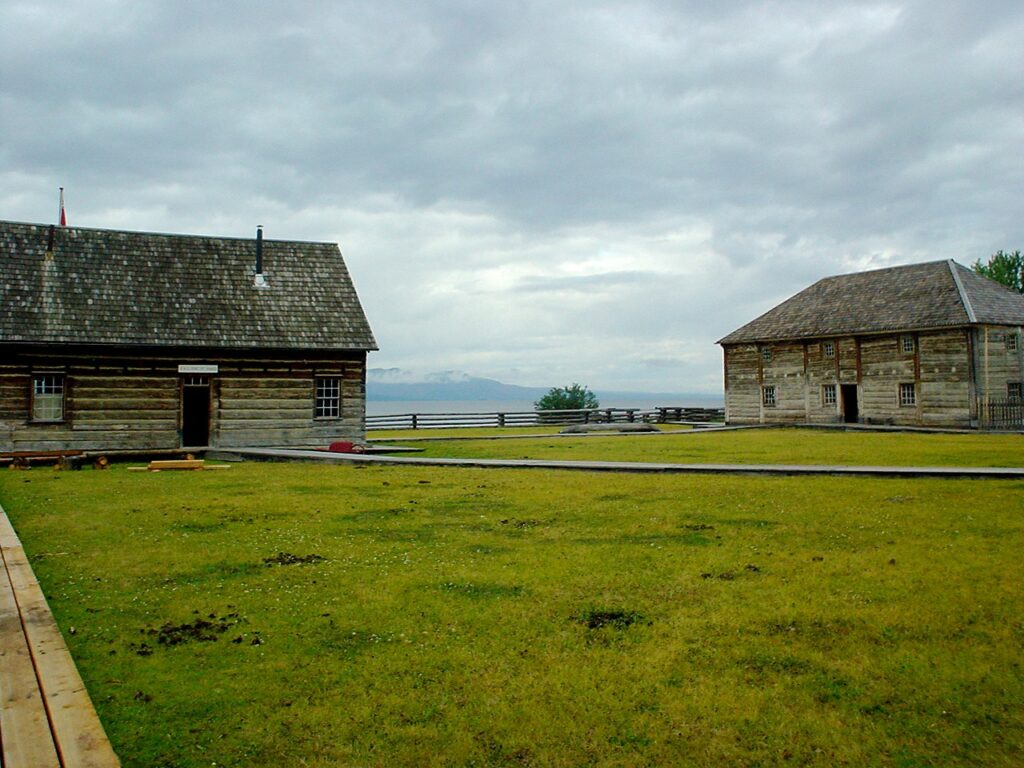
In British Columbia, several important forts played a crucial role in the region’s development. Fort St. James was a key fur trading post established by the North West Company.
Today, this site is a National Historic Site operated by Parks Canada. Another significant fort in the region is Fort Rodd Hill, located near the city of Victoria.
Built in the late 19th century, this coastal artillery fort was a central defense point for the region.
- Notable forts in BC:
- Fort St. James
- Fort Rodd Hill
Forts of Nova Scotia
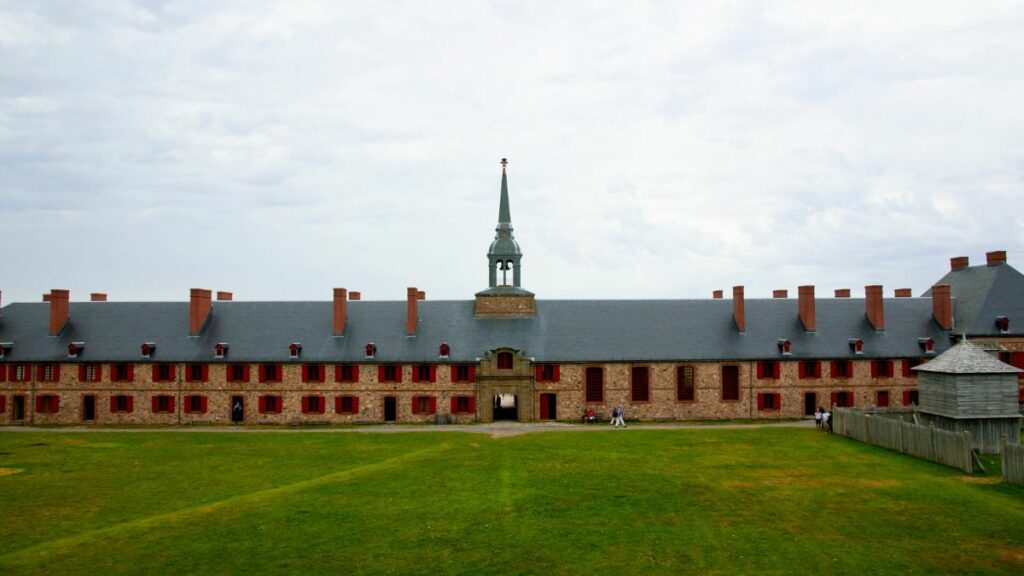
Nova Scotia is home to some of the most famed forts in Canadian history. The Fortress of Louisbourg is an 18th-century French fortress that showcases its era’s intricate and advanced design.
Fort Anne is another noteworthy structure situated in the town of Annapolis Royal. Both the British and French forces utilized it during various conflicts throughout history.
- Key forts in Nova Scotia:
- Fortress of Louisbourg
- Fort Anne
Historic Forts of Ontario

Ontario witnessed several prominent forts influencing its history. For instance, Fort York Boulevard in Toronto is named after the historic Fort York, which played a strategic role during the War of 1812.
Fort Frontenac, located in Kingston, was another vital stronghold that protected the western end of the St. Lawrence River.
Overlooking Lake Ontario, Point Henry houses Fort Henry, a 19th-century British military installation in Upper Canada now considered a UNESCO World Heritage Site.
- Ontario’s historic forts:
- Fort York
- Fort Frontenac
- Fort George
- Point Henry – Fort Henry
Prominent Forts in Quebec
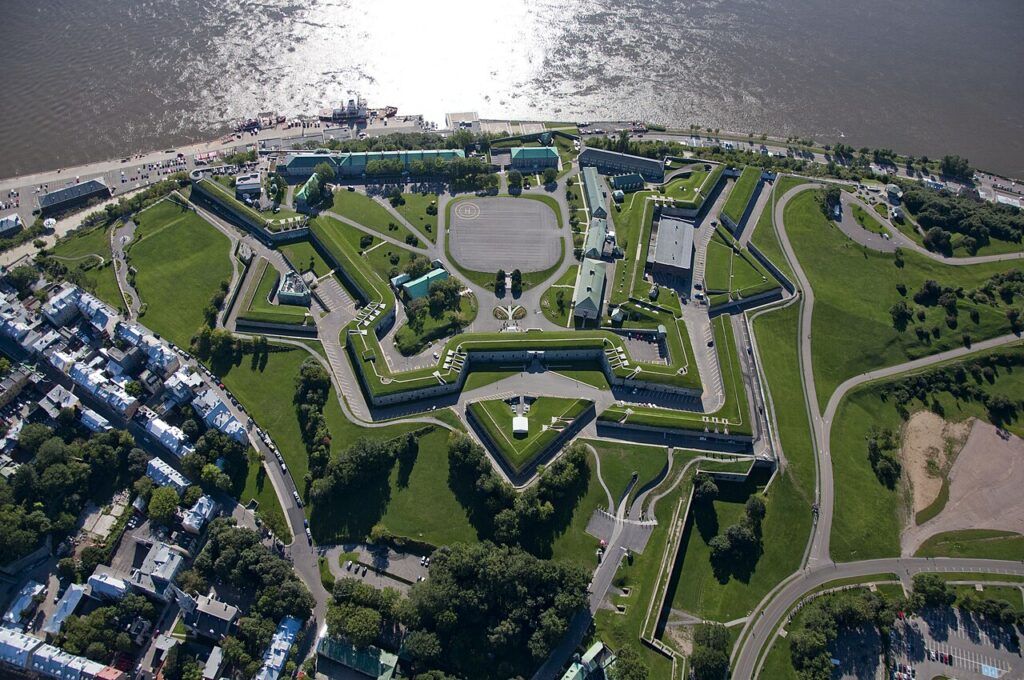
Quebec boasts a rich history of fortifications, with Fort Chambly being one of the most renowned. Constructed along the Richelieu River, the fort served as a vital defense point against potential invasions.
Additionally, the Citadelle of Quebec is a large military installation in the heart of Quebec City that remains an active garrison for the Royal 22e Régiment of Canada.
- Prominent forts in Quebec:
- Fort Chambly
- Citadelle of Quebec
Daily Life and Culture in Canadian Forts
Roles and Responsibilities
In Canadian forts, people performed various roles and responsibilities depending on their skills and positions. Some typical roles within the fort included:
- Military Personnel: Comprised of the fort’s guards and soldiers, responsible for protecting the fort and its residents.
- Traders: Those involved in trading goods with indigenous communities and other settlers.
- Artisans: Blacksmiths, carpenters, and other skilled workers who maintained the fort’s infrastructure.
- Clergy: Religious leaders responsible for attending to the spiritual needs of the fort’s residents.
At some forts, historical reenactments and special events take place, showcasing the people’s daily life within the fort. For example, the Fort Henry Guard in Kingston, Ontario, offers military drills and daily routine demonstrations.
The Influence of First Nations
The relationship between the European settlers and First Nations significantly impacted Fort’s life. Aboriginal people were critical allies to the settlers, providing essential support by sharing resources, knowledge, and trading connections.
As a result, there was often a mutual exchange of cultural practices and traditions between indigenous communities and the fort’s residents.
This cultural exchange extended to the North West Mounted Police, who established a good rapport with indigenous communities, fostering cooperative relationships and partnerships.
Food and Provisioning
Forts depended heavily on the surrounding environment and the skills of the people within for their food and provisions. Some typical fort foods included:
- Game meat: Deer, elk, and other animals hunted for sustenance.
- Fish: Abundant in many rivers and lakes close to forts.
- Agricultural products: Including grains, vegetables, and fruits.
- Preserved foods: Smoking, salting, and drying were standard food preservation techniques in the era of the forts.
In some instances, forts traded with the First Nations for essential provisions such as pemmican, a concentrated mixture of fat and meat used as a nutritious food source during long journeys.
Modern-Day Visitation and Activities
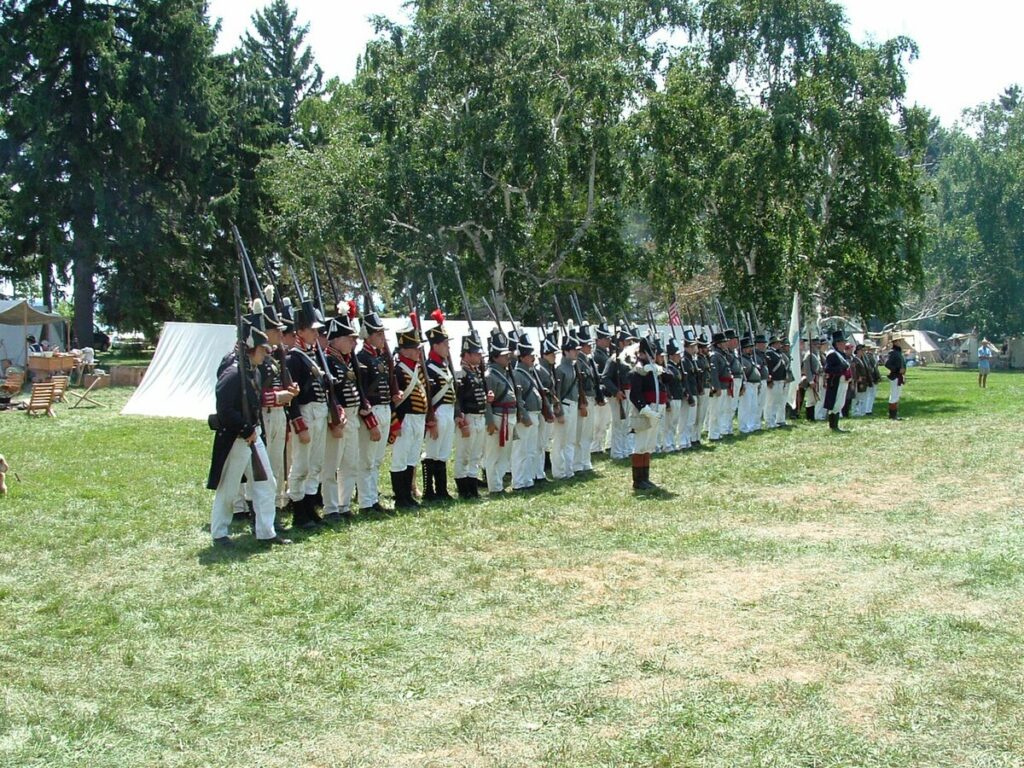
Today, visitors can expand their knowledge of Canadian history at various forts nationwide. Many forts offer a visitor center with valuable reference materials for school projects and general understanding.
One of the best ways to learn about the historical significance of these forts is through a guided tour. Some forts even offer free admission, making them an excellent place for budget-conscious families and educators to visit.
Recreational Experiences
Forts in Canada serve as more than just educational attractions; they also provide an opportunity for recreational experiences.
The scenic landscapes surrounding forts make them perfect spots for picnics, walks, or photography.
Visitors can use the open spaces and vast grounds for leisurely strolls or to relax in the peaceful atmosphere these historical sites offer.
Living History and Reenactments
A unique attraction in some Canadian forts is their celebration of living history and reenactments. Old Fort Erie, for example, hosts the Siege of Fort Erie Reenactment annually.
This event transports visitors back in time as they witness the story of the fortification unfold before their eyes. Participants dressed in period clothing act out important events, engaging visitors in an interactive learning experience.
Such reenactments allow history to come alive, providing a glimpse into the past of these impressive structures.
Conservation and Restoration Efforts
Parks Canada, an agency responsible for preserving Canada’s historical and natural heritage, plays a vital role in sustainable conservation efforts for the country’s forts.
By deploying historic preservation techniques, the agency ensures that the original buildings remain intact and protected for future generations.
One method Parks Canada employs is to create storage facilities that house valuable artifacts and materials from the forts.
These secure environments maintain optimal conditions to deter deterioration and damage, extending the preserved items’ lifespan.
Another approach is to build models of forts, offering a less invasive way for visitors to interact with the historical locations.
Instead of compromising the integrity of the original structures, these models provide educational and engaging experiences for users while enhancing preservation efforts.
Reconstructing the Past
In instances where preservation alone is insufficient, Parks Canada undertakes measures to reconstruct specific components of the forts, adhering to the original architectural designs as closely as possible.
This often involves implementing techniques used during the historical period and utilizing original materials to maintain authenticity.
One example of this reconstruction process involved building a second structure replicating an existing fort.
These reconstructions foster a greater understanding of Canada’s rich history and heritage by employing skilled craftspeople and utilizing historically accurate materials.
In maintaining and reconstructing these forts, a balance is struck between conserving the history and providing a meaningful experience for visitors.
Through the collaboration of experts, Parks Canada ensures that these forts remain a testament to Canada’s past while supporting sustainable conservation efforts for generations to come.
Related: 10 Historic Forts in Alaska
Commemorative and Cultural Events
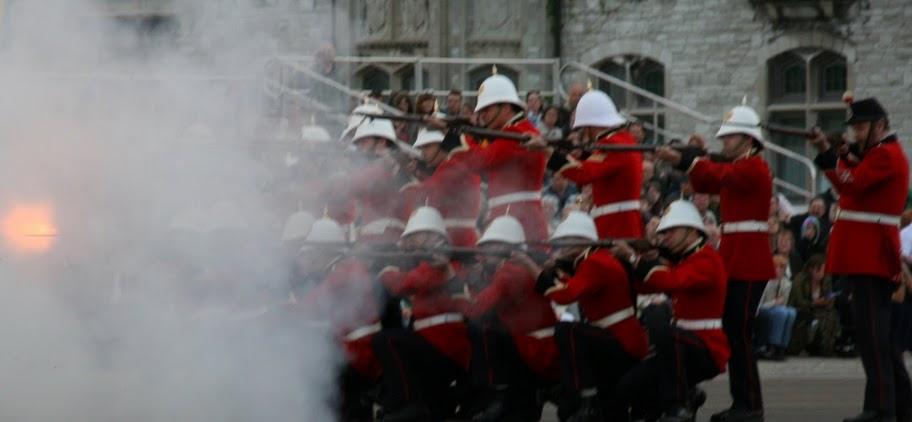
Annual Commemorations
Fort George hosts several annual events celebrating Canada’s rich history and the role of international diplomacy. One such event was the reenactment of the battle between the British and American forces during the War of 1812.
The event, held each year in October, features costumed performers, musket demonstrations, and a ceremonial tribute to Sir Isaac Brock, a British major-general who played a crucial role in the defense of Upper Canada.
Another notable commemoration occurs at the Royal Military College (RMC) in Kingston, Ontario. Each year, the RMC hosts a ceremony to honor the memory of fallen soldiers.
During this event, the names of the deceased are read aloud, and a moment of silence is observed.
The commemoration reminds cadets, faculty, and the general public of the sacrifices made by those who served their country.
Cultural Festivals
In addition to historical reenactments and solemn observances, Canadian forts serve as venues for various cultural festivals.
For example, Salmon Day is an event held at North West Mounted Police Barracks in Manitoba, which celebrates the region’s Indigenous cultures and the importance of salmon in their heritage.
Participants can participate in interactive displays and traditional Indigenous performances and sample delicious salmon dishes.
Another example of a cultural festival held at a Canadian fort includes the annual music and arts festival at Fort Calgary in Alberta.
This popular event showcases local artists, musicians, and performers and serves as a platform for community engagement and celebration of Alberta’s history and culture.
Fort Architecture and Design
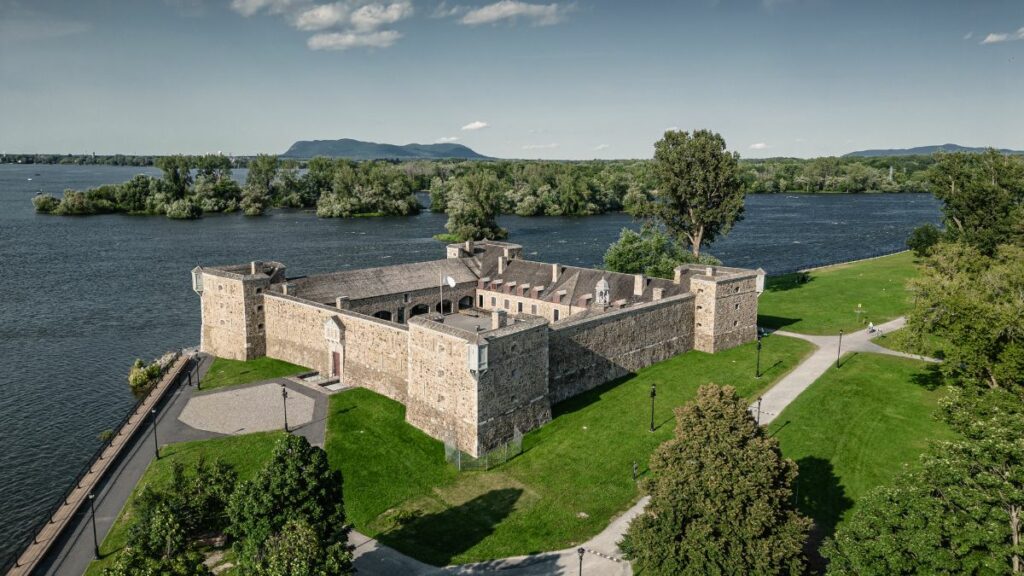
Defining Features of Forts
The forts in Canada showcase a variety of architecture and design features, representing different periods and influences throughout history.
One of the most iconic features of these military structures is the imposing stone structure that often comprises their main body. This symbolizes strength and resistance, providing defensive and offensive support to the inhabitants.
Canada has different types of forts, each tailored to their specific location and purpose. For example, the coastal artillery fort was designed to guard Canada’s extensive coastlines against enemy attacks.
Key elements of these forts include strategic ramparts and artillery placements, delivering adequate firepower to deter potential threats.
Another distinctive type of fort is the star-shaped structure. Widely recognized for its multiple triangular bastions, it provides efficient defense by allowing soldiers to control all angles of the fort perimeter.
This design simultaneously maximizes firepower and protection against enemy advances.
Evolution of Military Fortifications
As warfare evolved over time, so did the architecture of military fortifications. Early forts in Canada relied on simple, functional designs, primarily emphasizing practicality.
However, advancements in weaponry and military tactics in the 17th and 18th centuries brought the need to improve and adapt fort designs accordingly.
Canadian forts began incorporating more sophisticated elements that were pivotal to their effectiveness. Stone walls were made thicker to withstand the increasing power of artillery, while overall fort layouts received upgrades that enhanced their durability.
One major enhancement was the introduction of ramparts – raised mounds of earth behind perimeter walls to absorb the impact of enemy cannon fire. This reduced the vulnerability of forts and improved their resilience against attacks.
Related: 7 Historic Forts in Idaho
Role of Forts in Trade and Expansion
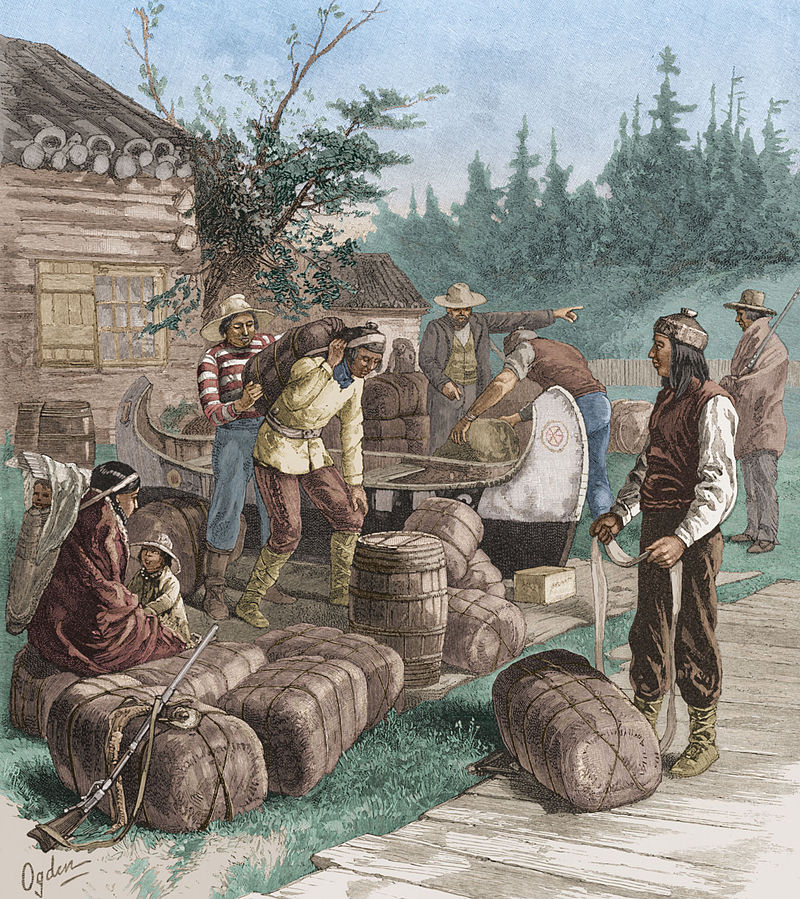
Hudson’s Bay Company Outposts
The Hudson’s Bay Company (HBC) played a significant role in Canada’s trade and expansion. Established in 1670, the HBC established a network of forts that served as the region’s first permanent fur trading posts.
The company’s trade activity focused on acquiring beaver pelts from Indigenous peoples, facilitating the growth of the European fur market.
Some of the notable HBC forts include:
- Fort Frontenac (1673): Located at the mouth of the Cataraqui River, it provided a strategic advantage in controlling the St. Lawrence River trading route.
- Fort No. (1727): Renamed Fort Albany, it allowed for better control of Hudson Bay’s southern coast.
These forts were instrumental in maintaining the HBC’s monopoly over the fur trade and consolidating invaluable trade networks with various Indigenous nations.
French and British Trading Forts
During the 17th and 18th centuries, French and British powers vied for control over North America’s lucrative fur trade. Both countries established their own forts to control and protect trading routes strategically.
A few prominent French and British trading forts were:
- French Forts:
- Fort St. Louis (1679): Fort Chambly defended the region south of Montreal from British and Iroquois invasions.
- Fort Ville Marie (1642): The founding settlement of Montreal, which later grew into an essential trading post.
- British Forts:
- Fort Anne (1702): Located in present-day Nova Scotia, it protected the Annapolis River from French encroachment, securing British access to vital resources.
- Fort George (1765): Established after the British conquest of New France, it aimed to preserve the fur trade routes along the Ottawa River.
| Fort Name | Delivery Date | Role in Trade and Expansion_ |
|---|---|---|
| Fort Frontenac | 1673 | First permanent fur trading post + Controlled St. Lawrence River trading route |
| Fort No. | 1727 | Controlled Hudson Bay’s southern coast |
| Fort St. Louis | 1679 | Protected French territory from British and Iroquois invasions |
| Fort Ville Marie | 1642 | Founding settlement of Montreal |
| Fort Anne | 1702 | Ensured British control of the Annapolis River |
| Fort George | 1765 | Secured British fur trade routes along the Ottawa River |
During the early 19th century, the expansion of the British settlements in Canada led to the construction of the Rideau Canal – a significant feat of engineering and military strategy.
The canal system connected the Ottawa River to Lake Ontario and was defended by several forts, reaffirming the British dominance in the region.
Canadian Forts in Modern Culture
Representation in Literature and Film
Canadian forts have been prominently featured in various forms of literature and film, contributing to preserving and celebrating Canada’s history.
For instance, Fort Saint John has been a recurring motif in historical fiction, highlighting its significance during critical moments in Canada’s past.
Similarly, Fort Malden has been portrayed in various documentaries and feature films, drawing attention to its role in the War of 1812 and its status as a historic monument.
To further illustrate the cultural relevance of these historic forts, the following table presents examples of notable works that showcase Canadian forts:
| Fort | Literature | Film |
|---|---|---|
| Fort Saint John | The Lonely Redoubt (Jeremy Gosman) | Fort Saint John (2020 Documentary) |
| Fort Malden | The Sentinel of Malden (Heather Ellis) | A Tale of Two Forts (2018 Documentary) |
Impact on Local and National Identity
The presence of historic forts across the nation is a testament to Canada’s rich past and provides a strong sense of national pride and identity.
These forts showcase the diverse historical and architectural eras throughout Canada’s history and represent the country’s resilience and strength.
- Fort Saint John – Located in British Columbia, played a central role in the fur trade during the early 19th century. This fort serves as a reminder of the industry that helped settle the country and cultivate its economy.
- Fort Malden – Situated in Amherstburg, Ontario, is known for its role during the War of 1812. This site preserves the military significance of the time, offering insight into historical events that helped shape the Canadian identity.
In their local communities, these forts often become landmarks, tourist attractions, and influential centers for cultural events.
They bring a sense of pride and connection to the nation’s history, inspiring residents to learn about and honor their past.
Through literature, film, and community engagement, the significance of historic forts in Canada is well-established in the national consciousness, fostering an appreciation for the country’s storied past.
Related: Forts in Pensacola Florida
Conclusion – Forts in Canada
Canada’s forts are a valuable reference for understanding the nation’s history and the crucial role they played in shaping the country. These historic locations continue to hold a significant place within the Canadian landscape and heritage.
If you have visited any of these forts, we would love to hear about your experience in the comments section below. Thanks for reading, and I hope you enjoyed the article.

Cory is a website owner and content creator who enjoys fishing, history, coin collecting, and sports, among other hobbies. He is a husband and father of four.
Romans 15:4 For whatever was written in former days was written for our instruction, that through endurance and through the encouragement of the Scriptures we might have hope.

